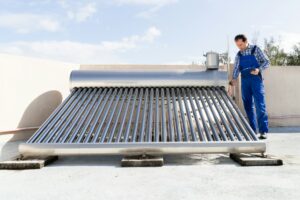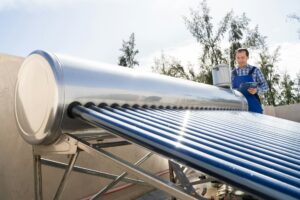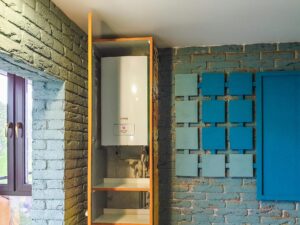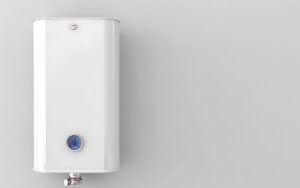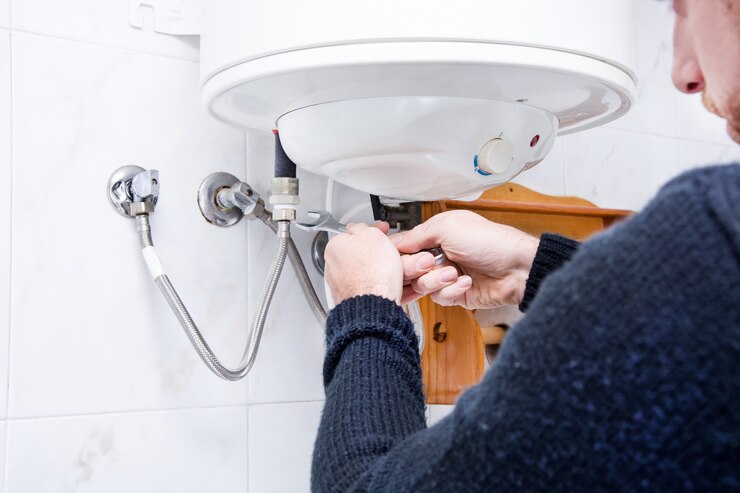
Your water heater is a hardworking appliance that may face issues over time, like sediment buildup. This sediment, often caused by minerals in the water, settles at the bottom of the tank. As these particles accumulate, they can create a host of problems.
Sediment buildup can decrease your heater’s efficiency, reduce the hot water supply, and cause noisy operation. It’s crucial to address and manage this issue to keep your system running well. Understanding what causes sediment and knowing how to fix it can help you maintain optimum performance and avoid costly repairs.
Fortunately, with a few maintenance steps, you can deal with sediment effectively. By learning how to remove sediment and prevent it from forming again, you can ensure your water heater lasts longer and works reliably, giving you the hot water you need daily.
Identifying the Causes of Sediment Buildup in Water Heaters
Sediment in water heaters is made up of tiny particles that settle at the tank’s bottom over time. These particles primarily consist of mineral deposits like calcium and magnesium. Sediment forms due to the natural minerals present in the water, especially in areas with hard water. As water heats, these minerals separate and sink, creating a layer of sediment.
Several common sources can lead to sediment accumulation:
– Mineral Deposits: Hard water contains high levels of minerals, which precipitate during heating.
– Rust: Over time, the interior of the water heater may corrode, contributing to additional sediment from flaked rust.
– Sand or Dirt: These particles may enter through the water supply, especially in systems without a filtration process.
Water conditions significantly affect the amount of sediment buildup. Regions with hard water experience sediment issues more frequently because of higher mineral content. Additionally, fluctuating water pressures can stir up settled sediment, accelerating the accumulation process.
By understanding these causes, homeowners can better anticipate sediment buildup and take preventative measures to protect their water heating systems from future complications.
Effects of Sediment on Water Heater Performance
Sediment buildup can have several adverse effects on a water heater, impacting its performance and lifespan. As sediment settles at the bottom of the tank, it acts as an insulating layer between the burner and the water. This makes the heater work harder and less efficiently, as more energy is required to heat the water to the desired temperature.
The following are some key issues caused by sediment buildup:
– Reduced Efficiency: More energy is needed to heat water, leading to higher utility bills.
– Corrosion and Leakage: Sediment can cause the tank to rust from the inside, potentially leading to leaks.
– Overheating and Wear: The increased workload can overheat and damage elements like the burner or heating rods.
Signs indicating sediment problems include:
– Noisy Operation: Banging or popping sounds occur as water trapped under the sediment turns into steam.
– Reduced Hot Water Supply: The heater’s capacity decreases, leading to quicker depletion of hot water.
– Inconsistent Water Temperature: Fluctuating temperatures in water delivery often indicate sediment disruption.
By recognizing these effects and signs, homeowners can take timely action to address sediment issues and maintain the water heater’s efficiency and safety.
Methods for Removing Sediment from Water Heaters
Flushing your water heater is an effective way to remove sediment buildup. This process involves removing the sediments to restore the heater’s efficiency. Follow these steps to ensure a thorough cleaning:
1. Turn Off the Heater: For gas models, set the thermostat to “pilot.” For electric models, switch off the power at the breaker.
2. Connect a Garden Hose: Attach one end to the drain valve at the bottom of the heater and place the other end in a suitable drainage area.
3. Drain the Water Heater: Open the drain valve and let the water flow out until it’s clear, indicating sediment removal.
4. Flush the Tank: Open the cold water supply valve for a few minutes to stir up remaining sediment, and let it drain out.
5. Close the Valves: After flushing, close the drain valve and remove the hose.
6. Refill the Tank: Open the cold water supply valve to refill the heater. Once full, turn the power or gas back on.
You’ll need a garden hose, a wrench for opening the valve, and gloves for protection. Safety is key during this process. Make sure the water cools before starting to avoid burns, and always double-check connections to prevent leaks.
Preventative Measures and Regular Maintenance
Preventing sediment buildup is crucial for maintaining your water heater. Using sediment filters is an effective method. These filters catch particles before they enter your heater. Additionally, water softeners can help by reducing mineral content in hard water, which minimizes sediment formation.
Here’s a maintenance schedule you can follow:
– Monthly Check: Inspect for leaks and ensure the temperature setting is optimal.
– Twice a Year: Drain a few gallons from the tank to remove sediment and check the anode rod for corrosion.
– Annually: Conduct a full flush and inspect all connections, replacing worn parts as needed.
Routine maintenance preserves efficiency and extends your heater’s lifespan. Professional maintenance services are highly beneficial. Technicians can perform detailed inspections, allowing for timely repairs and adjustments you might miss.
Conclusion
Addressing and preventing sediment buildup in your water heater is vital for maintaining its performance and avoiding costly repairs. Understanding the causes, recognizing the signs, and applying the right cleaning methods are essential steps every homeowner should take. Routine checks and proper maintenance not only enhance heater efficiency but also ensure a consistent hot water supply.
If you’re experiencing sediment problems in your water heater or need expert care, My Jockey is here to help. Our team provides detailed inspections, installations, and repairs to ensure optimal water heater performance. Stay comfortable and efficient with our trusted HVAC and water heater services in Saratoga Springs and The Capital Region, NY. Contact us today to schedule your next service.

